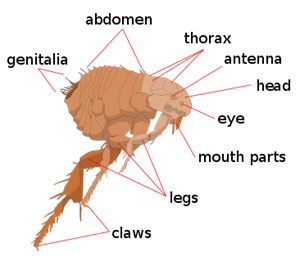Fleas, Mosquitos and Ticks, Oh My!
We’re all familiar with these pests! When the dog comes in, we comb through fur looking for evidence of fleas and ticks. As diligent pet owners, we take measures to protect our pets from fleas with treatments. But why not treat the source? Consider where the insects are coming from. And if your pets are susceptible, that means anyone else who enjoys rolling around in the grass (kids) are also probably going to pick them up. Your lawn is the perfect hideaway. Green healthy grass mowed at the right height can be a haven for these bugs. So let’s talk about how to identify bug bites and how to make your lawn safer for your pets and children.
What do fleas and ticks look like?
Today, we’ll focus on fleas and ticks. Mosquitos and their bites, while just as annoying, are more easily identifyable, especially here in the south! Fleas are tiny little creatures. They are parasites, reproduce quickly, and live mostly on pets. But they do attack humans, too. Their bites are itchy and sometimes painful. Fleas do not have wings and just hop around waiting to invade! There is little chance of humans being infected by a disease from fleas, but not the case for pets. Have them seen by a vet if they have fleas. Even if you don’t have pets, you can still have fleas in your lawn. They prefer shady areas and tall grass. Check for them in and around woodpiles, decks, and storage buildings. Here’s what they look like up close. Ugly little things…

There are many varieties of ticks, from ticks that prey on bird species to the common tick that you find on dogs and humans. They are all parasites that need a host organism to survive. They like to hang out toward the end of grass blades as to “hop” on an innocent, human or animal. They then burrow their head into the host and begin feasting. Since they survive on blood, there is potential for disease transfer. Ticks need 24-36 hours of time connected to the host for the transfer to occur. Disease and infection can also happen when you attempt to remove the tick. If you don’t remove correctly (for example, if you just squish the tick to kill it before removing or if you just pull on the body), the tick will eject all of its insides into the host causing infection. The key is to encourage the tick to release, and then pull out. You can find special tweezers at pet stores to remove ticks. They are pen-shaped allowing you to get around the tick’s body and get hold of its head close to the skin. Gently turn the tweezers to the left and right just enough for the tick to detach itself, then pull it out. Gross, we know.
On humans, ticks prefer areas where the skin is humid and soft, such as the stomach, groin area, armpits, and the skin behind the ears. Most diseases transferred are not serious, but the two to watch out for are Lyme disease and tick-borne meningoencephalitis. If you have been bitten and want to know if the tick is a carrier of one of these diseases, save the tick in a jar and take it your vet or doctor to be tested.
How do you identify flea and tick bites?
With a tick, you will find the culprit along with the bite. But with fleas, it can sometimes be a case of mysterious bites until identified. Here’s an example of flea bites. They usually occur in groups of three or four and/or in a straight row. Unlike mosquito bites, flea bites do not get bigger as time goes on.
How can you prevent fleas and ticks?
Full avoidance of fleas, ticks and mosquitos is just not possible. They are everywhere. But you can control them in your own lawn by treating it especially for fleas, ticks and mosquitoes. You can also prevent by applying bug repellent and checking your pets and children when they come in from walks or playing outside.
TIP: Make your own repellant by using essential oils as the active ingredient. Click here for one recipe but feel free to try others and let us know how they worked!
There are many reasons to treat your lawn for fleas and ticks including spreading of diseases and annoying bites and irritation. Pure Green provides a special treatment that can control the spread of fleas and ticks and also control mosquitos. Call us today to get full enjoyment out of your lawn this summer!

